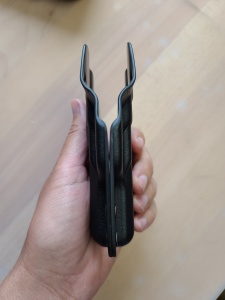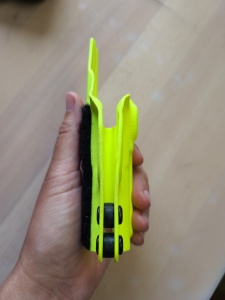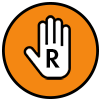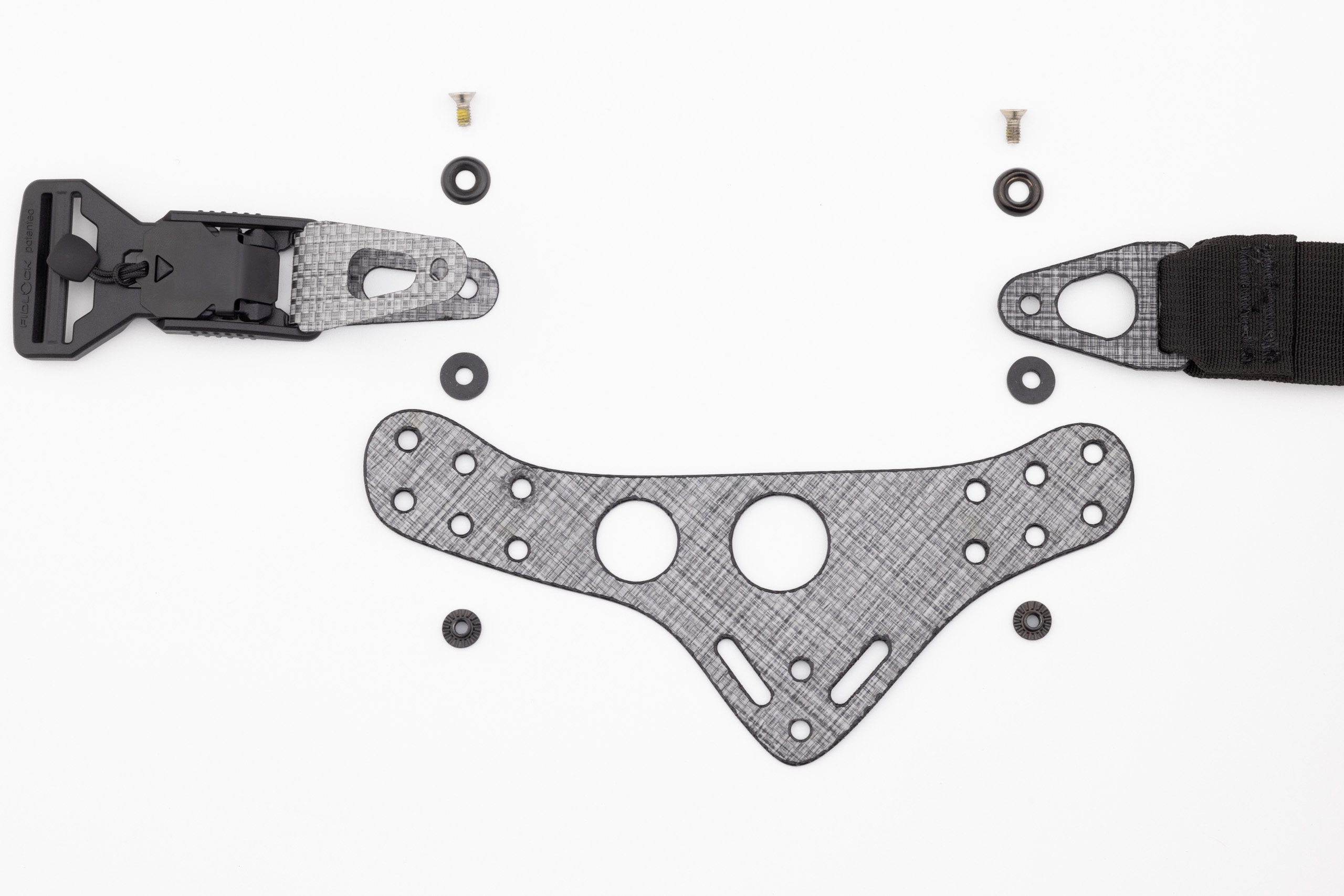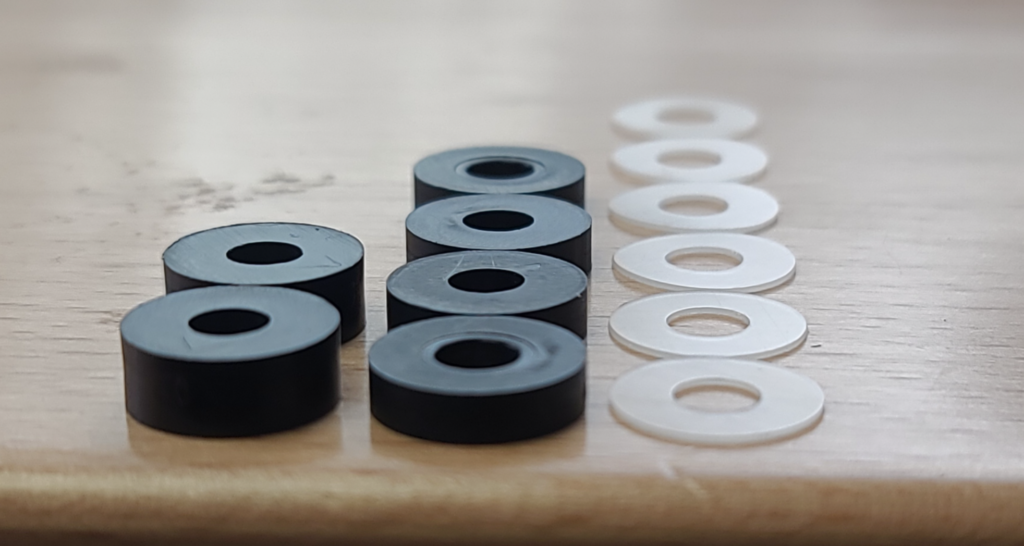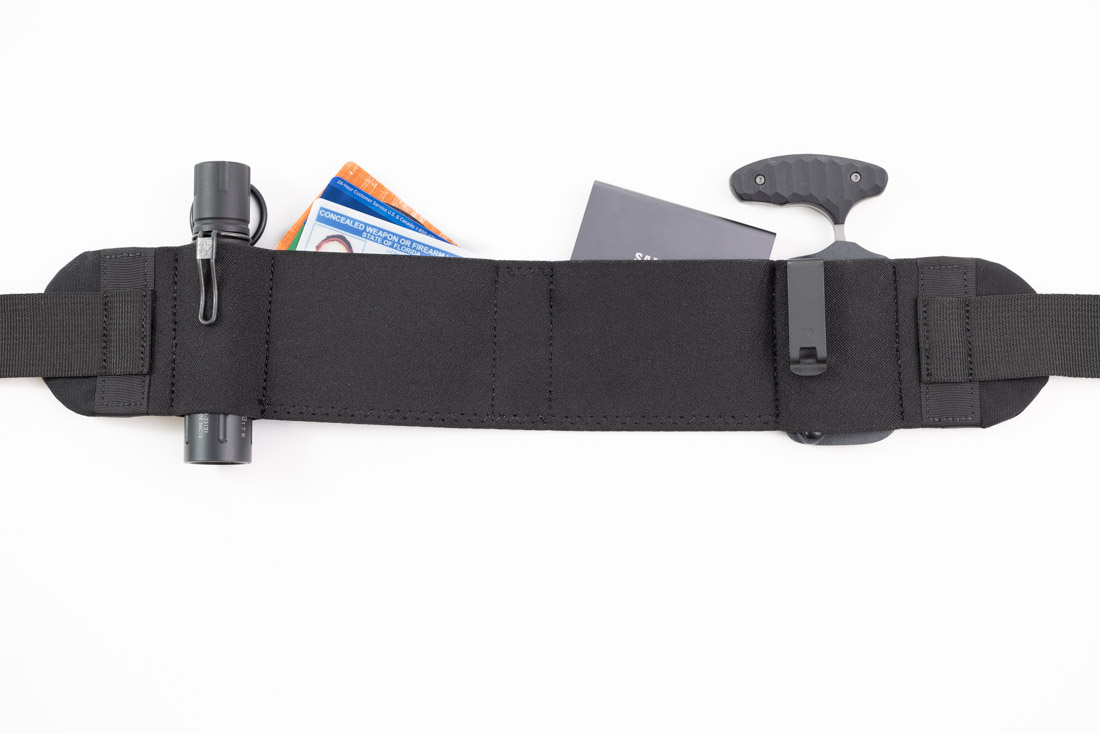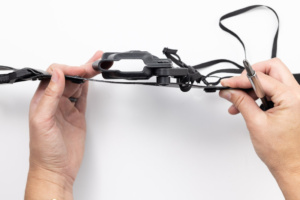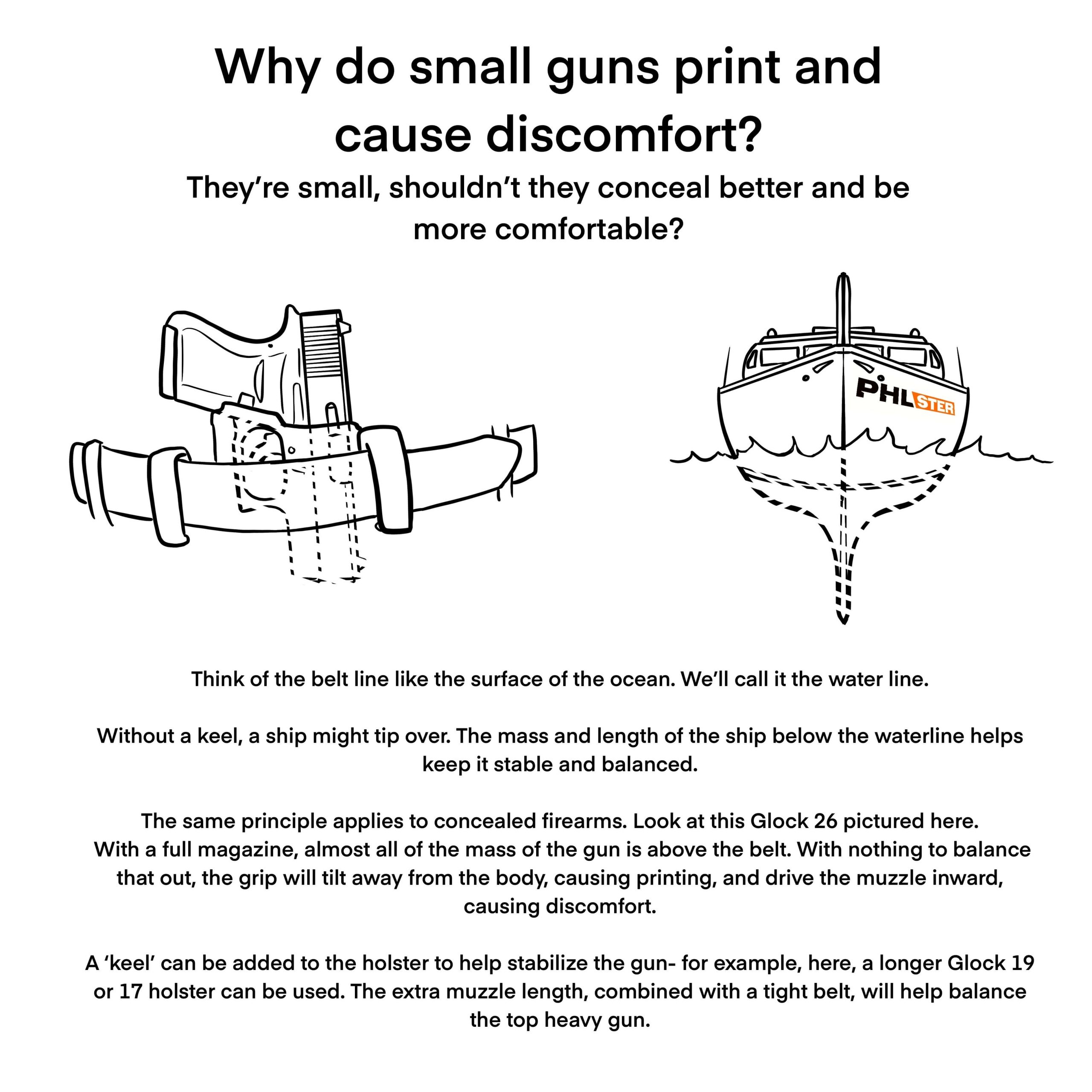Instructions
PHLster Enigma OS - Standard
Learn how to assemble, adjust, and wear your PHLster Enigma OS – Standard. “OS” stands for open source, and it means this model of Enigma works for many different holsters, as long as they meet the compatibility requirements.
Below you’ll find an overview of all the possible adjustments, plus tips and tricks for concealment and comfort. Take some time to experiment with the different adjustments and techniques until you find the best combination of factors for your unique body shape.
To begin, choose what type of holster you have:
Please note: There are DIFFERENT assembly instructions for the Enigma OS – Standard, depending on what type of holster you have. Make sure to choose the correct instructions before you begin, or it won’t work. To double check that your holster is Enigma compatible, check the requirements in the fit guide.
How To Assemble Your Enigma OS - Standard with a Fixed Retention Holster
Video Instructions:
Fixed Retention Holster Assembly - Standard Enigma
A relaxed paced, beginner-friendly walk through of the entire Standard PHLster Enigma assembly process. The techniques in this video can be adapted for right or left hand use. Left handed users may want to use the written instructions for help with orienting the Enigma faceplate and holster shell.
Note that this video is for fixed retention holsters only. If you have an adjustable retention holster, this method will not work. See the adjustable retention assembly video instead.
Once you’ve assembled your Enigma, here’s an overview of what to do next. You can find more information on any of these topics by using the navigation menu below.
Once you’ve assembled your Enigma, here’s an overview of what to do next. You can find more information on any of these topics by using the navigation menu below.
How to properly wear and adjust the PHLster Enigma Express leg leash. Learn the two different routing methods, and how to adjust the leg leash for best results on your body. Whether you’re just starting out with the Enigma, or whether you’re having issues that need troubleshooting, reviewing this video is the best place to start.
For more leg leash instructions and tips, see the leg leash section below.
Here’s how to install the sport belt on the Standard PHLster Enigma. If you have the Enigma Express, the instructions are different – please see the Express page.
How To Assemble Your PHLster Enigma OS (Standard) with an Adjustable Retention Holster
If you have an adjustable retention holster, we highly recommend using the fixed retention kit when assembling your Enigma. Learn how it works and why we recommend it.
How to test holster retention:
Learn how to (and how NOT to) test your holster’s retention by reading this blog article and watching the included videos.
Adjustable Retention Video Instructions:
Fixed Retention Holster Assembly - Standard Enigma
Your Enigma may have come with an updated buckle capture. Instructions for installing it can be found in the main instruction video. It installs on the Enigma faceplate just like the original, so you can follow the regular instruction video from here.
Once you’ve assembled your Enigma, here’s an overview of what to do next. You can find more information on any of these topics by using the navigation menu below.
Once you’ve assembled your Enigma, here’s an overview of what to do next. You can find more information on any of these topics by using the navigation menu below.
How to properly wear and adjust the PHLster Enigma leg leash. Learn the two different routing methods, and how to adjust the leg leash for best results on your body. Whether you’re just starting out with the Enigma, or whether you’re having issues that need troubleshooting, reviewing this video is the best place to start.
For more leg leash instructions and tips, see the leg leash section below.
Here’s how to install the sport belt on the Standard PHLster Enigma. If you have the Enigma Express, the instructions are different – please see the Express page.
How To Use the Leg Leash
The Enigma Express leg leash holds the holster down when you draw. Proper adjustment is critical to getting a comfortable and secure fit. Watch the first video below to learn how to adjust your leg leash correctly — be sure to try both leg leash routing methods to see which one is better for you. The other videos cover how to shorten the leg leash (for smaller users), how to change your leg leash to a different material, and how to troubleshoot if your leg leash loosens throughout the day.
Having trouble?
For tips, troubleshooting, and safe leg leash alternatives, check out this blog post.
How To Use the Leg Leash
How to properly wear and adjust the PHLster Enigma Express leg leash. Learn the two different routing methods, and how to adjust the leg leash for best results on your body. Whether you’re just starting out with the Enigma, or whether you’re having issues that need troubleshooting, reviewing this video is the best place to start.
Smaller users – here’s how to shorten and trim your Enigma Express leg leash. Just be sure not to trim your leg leash before trying the different routing methods, and make sure you have enough material for any ride height at which you choose to carry your gun.
If your leg leash slips or loosens throughout the day, try this non-slip buckle routing method.
If you don’t find the leg leash material to your liking, you can easily switch it out for a material of your choosing. A common choice is 550 paracord with the core removed. When using different leg leash materials, be sure to review the Non-Slip Routing video to make sure your leg leash stays secure.
How To Install Enigma Accessories
The Standard PHLster Enigma can be upgraded with a number of optional accessories. Learn what they are and how to install them here.
The optional Sport Belt accessory installs in place of the regular nylon belt that comes with the Enigma. The Sport Belt improves comfort and provides additional support with an elastic back panel.
The sport belt installs on the Enigma faceplate using the same hardware as the original belt. See the video for more detailed instructions.
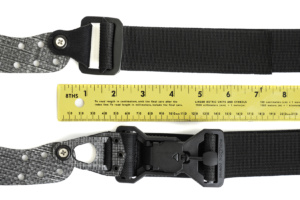 The Reduced Size Buckle is an optional replacement for the magnetic buckle that comes with the Enigma. It’s recommended for smaller users, or people who want extra space on their belt to carry other gear. If the regular buckle sits on your hip bone and causes a pressure point, try this.
The Reduced Size Buckle is an optional replacement for the magnetic buckle that comes with the Enigma. It’s recommended for smaller users, or people who want extra space on their belt to carry other gear. If the regular buckle sits on your hip bone and causes a pressure point, try this.
- Reduces buckle span by 3″
- Recommended for smaller users (30″ waist or below)
- Takes up less space, allowing you to accommodate additional gear items
- Attaches with the original hardware included in the Enigma hardware kit
To install, simply remove the original buckle capture and magnetic buckle from your Enigma faceplate, and install the Reduced Size Buckle in its place using the same hardware. It installs directly to the Enigma faceplate.
Watch the instruction video to learn how to use the PHLster Modular Wedge Kit.
We also recommend watching the Poke and Check video and the Concealed Carry Comfort video, both of which can be found here.
If you’d like to change the amount of grip rotation you get, changing your Modwing inserts can help.
eMod inserts are optional inserts that you can add to your Modwing to replace the standard Modwing inserts. The eMod inserts help the Enigma faceplate lay flatter, and improve grip rotation and grip tuck.
See the video below for full assembly instructions.
This hard spacer kit replaces the soft rubber washers found in adjustable retention holsters.
- Prevents rotation – How it works.
- Allows for tight, secure lockup between holster shell and Enigma faceplate
- Use with adjustable retention holsters only – not needed with PHLster holsters.
For full assembly instructions, please see the Adjustable Retention section.
Enigma OS - Standard - Accessories
This video shows how to install and adjust the Sport Belt. Note that the Sport Belt adjusts from both sides, so you can easily change the centering of the back pad.
The Sport Belt is an optional Enigma accessory that improves comfort, and helps keep the Enigma belt tension more consistent.
Here’s how to change the eMod insert on your PHLster Enigma or Enigma Express. Changing the eMod insert changes how much the grip (handle) of the gun rotates in toward your body. There are three different options – the tall insert, the short insert, or no insert (just the bare wing only). Watch the Concealment Mechanics videos to learn how much grip rotation you need for your body shape.
How To Get Good Concealment - A Step-By-Step Guide
Our Concealment Mechanics graphics and videos will walk you through the steps to getting good concealment with your Enigma. Most people don’t get perfect concealment right away – it takes some work to dial things in for your unique body shape. You’ll need to experiment with your gun placement, belt tightness, Enigma adjustments, and wedge placement to get your best possible concealment.
This video series will walk you through how to find your concealment sweet spot, how to use the Poke and Check method to determine if you need to make adjustments to your concealment, and how to decide whether you need to add a wedge. You can also check the Standard Engima adjustments section above for help with configuring your Enigma for your body.
Once you get past the basics, you can also learn more about the deeper technical and psychological factors that make for good concealment. There’s a lot of information, but you can go at your own pace.
Concealed Carry Comfort
Comfortable concealed carry starts with knowledge rather than gear. Watch this video to identify any comfort issues you might be having, and learn the basic skills for getting comfortable. After watching, you’ll be much better equipped to find solutions that work for your chosen holster, carry position, and body type.
Adjustments and Configurations
The Enigma OS (Standard) can be adjusted several different ways. You can learn more about the possible adjustments below.
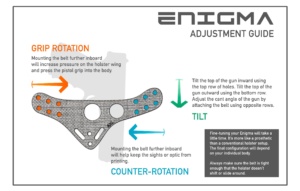 The Enigma has six belt attachment holes on either side of the faceplate. These control grip tuck, grip rotation, and optic printing. Please watch the Standard Enigma Poke and Check video below for more information.
The Enigma has six belt attachment holes on either side of the faceplate. These control grip tuck, grip rotation, and optic printing. Please watch the Standard Enigma Poke and Check video below for more information.
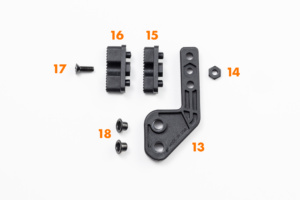 To make gross adjustments to the amount of grip rotation you get, you can change your Modwing inserts (15, 16). A standard Modwing will come with a short (15) and tall (16) insert.
To make gross adjustments to the amount of grip rotation you get, you can change your Modwing inserts (15, 16). A standard Modwing will come with a short (15) and tall (16) insert.
The tall insert will give you the most grip rotation (more than is necessary for most guns). The short insert will give you moderate grip rotation. Using the wing alone, with no insert, will give you the least amount of grip rotation.
If in doubt, start with the short Modwing insert.
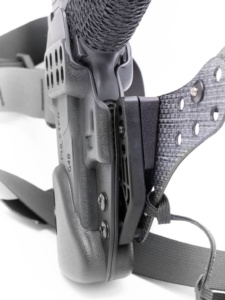
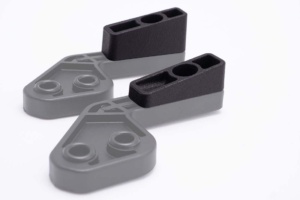 eMod inserts are optional accessory inserts that you can add to your Modwing to replace the standard Modwing inserts. The eMod inserts help the Enigma faceplate lay flatter, and improve grip rotation and grip tuck.
eMod inserts are optional accessory inserts that you can add to your Modwing to replace the standard Modwing inserts. The eMod inserts help the Enigma faceplate lay flatter, and improve grip rotation and grip tuck.
Here’s an instruction video for how to change and adjust eMod inserts.
Smaller users may need to shorten the leg leash drop. You can do this by fastening the leg leash through one of the larger faceplate holes rather than through the leg leash slot. See the video below for more detailed information.
Fixed retention holsters:
If you’re having problems with your gun being too tight or too loose in the holster, first double check that you have the correct holster shell for your gun model. Aftermarket modifications to the gun may cause problems with retention.
Next, read this article on how holster retention works, and test your retention as shown. Do not test holster retention by shaking the holster upside down – that is not the correct way to test.
If these steps don’t resolve your issue, you can contact the manufacturer of your holster shell for help. Before you do so, please make sure you’re testing your holster retention correctly.
Adjustable retention holsters
First, make sure you are testing your retention correctly. Do not test holster retention by shaking the holster upside down – that is not the correct way to test.
If you are testing your holster retention correctly and your retention is still too tight or too loose, follow the adjustable retention assembly instructions to add or remove shims from your fixed retention kit.
The Enigma is a skeleton. You start with the basic bone structure, and then you flesh it out to suit your body shape and your individual comfort needs. Since everyone is different, it takes some experimentation and customization to get the level of comfort and concealment you want.
The Enigma is designed to be a hardcore piece of fighting equipment that can survive extreme scenarios. In order to make it hold up to those demands, we chose materials for strength and rugged durability. The Enigma is designed to be ergonomic and adjustable – but it’s NOT soft.
Skin comfort is an important factor in overall concealed carry comfort, and that’s why we made the Enigma as open to customization as possible. The easiest way to achieve skin comfort is just to wear an undershirt, camisole, underwear, or a bandeau under your Enigma. However, if you prefer to wear your Enigma directly against the skin with no undergarments, there are a variety of comfort solutions available, from aftermarket covers to sport belts to creative DIY solutions. You can choose whatever mods you need to get to your desired level of skin comfort. Like everything Enigma, expect it to take some experimentation.
As always, knowledge comes first before gear. Learn what makes holsters comfortable here.
You can add a wedge to your holster to improve both comfort and concealment. Learn more about wedges.
DIY tutorial on how to make your own wedge.
We welcome you to join the PHLster Concealment Workshop group on Facebook. It’s a large and active community with people from all walks of life. See how other people are wearing their Enigmas, and get inspiration for mods and adjustments. You can see the Enigma in action on people with different body shapes, with different wardrobes.
Enigma OS (Standard) Adjustments
Here’s how to use the Poke and Check method to adjust your Standard Enigma. This will help you figure out which belt attachment holes are right for your body.
Changing the eMod insert changes how much grip rotation you get.
Here’s how to shorten and trim your Enigma leg leash. If you find you can’t get the leg leash drop short enough, this will help. Loop the leg leash through one of the larger faceplate holes rather than through the leg leash slot.
Tips, Tricks, and Troubleshooting
With correct technique, the magnetic buckle on the Enigma is very easy to operate. Do not attempt to force the buckle open by pulling straight out. Instead, pull forward on the buckle tab. Watch the video to see how.
If the buckle lands over your hip bone and causes a pressure point, see the adjustments section to learn how to move and adjust it. You can also try the Reduced Size Slider Buckle.
• Are there alternatives to the leg leash?
• Can I take the leg leash off?
• I don’t like the leg leash material. Can I change it?
• What if the leg leash is too long. Can I trim it?
• What if the leg leash prints in leggings?
As a general rule, if your leggings are tight enough to see panty lines, they’re tight enough that your leg leash may show. Adjusting it so it’s in the crease of your buttock will help minimize the visual impact. You can also try the alternative leg leash routing method from the instruction video in the leg leash section above. If you prefer an aftermarket solution, check out the Bumster from Levo Designs.
Fixed retention holsters:
If you’re having problems with your gun being too tight or too loose in the holster, first double check that you have the correct holster shell for your gun model. Aftermarket modifications to the gun may cause problems with retention.
Next, read this article on how holster retention works, and test your retention as shown. Do not test holster retention by shaking the holster upside down – that is not the correct way to test.
If these steps don’t resolve your issue, you can contact the manufacturer of your holster shell for help. Before you do so, please make sure you’re testing your holster retention correctly.
Adjustable retention holsters
First, make sure you are testing your retention correctly. Do not test holster retention by shaking the holster upside down – that is not the correct way to test.
If you are testing your holster retention correctly and your retention is still too tight or too loose, follow the adjustable retention assembly instructions to add or remove shims from your fixed retention kit.
• 3 Key principles of concealment
• Finding your concealment sweet spot – Remember that the concealment principles are universal, and all bodies are unique. If your exact body type isn’t shown in the video, you can still use the concealment principles to find your own sweet spot.
• The “Keel Principle,” and how longer holsters can often be more comfortable and concealable
• Appendix carry tips for larger folks – abdominal fat distribution and appendix carry
• Comfortable Concealed Carry Explained – Comfortable concealed carry starts with knowledge rather than gear. Watch this video to identify any comfort issues you might be having, and learn the basic skills for getting comfortable. After watching, you’ll be much better equipped to find solutions that work for your chosen holster, carry position, and body type.
Enigma design and materials:
• If the Enigma’s magnetic buckle sits over your hip bone and causes a pressure point, try switching to the reduced size buckle instead.
General comfort tips:
The Enigma is a skeleton. You start with the basic bone structure, and then you flesh it out to suit your body shape and your individual comfort needs. Since everyone is different, it takes some experimentation and customization to get the level of comfort and concealment you want.
The Enigma is designed to be a hardcore piece of fighting equipment that can survive extreme scenarios. In order to make it hold up to those demands, we chose materials for strength and rugged durability. The Enigma is designed to be ergonomic and adjustable – but it’s NOT soft.
Skin comfort is an important factor in overall concealed carry comfort, and that’s why we made the Enigma as open to customization as possible. The easiest way to achieve skin comfort is just to wear an undershirt, camisole, underwear, or a bandeau under your Enigma. However, if you prefer to wear your Enigma directly against the skin with no undergarments, there are a variety of comfort solutions available, from aftermarket covers to sport belts to creative DIY solutions. You can choose whatever mods you need to get to your desired level of skin comfort. Like everything Enigma, expect it to take some experimentation.
We welcome you to join the PHLster Concealment Workshop group on Facebook. It’s a large and active community with people from all walks of life. See how other people are wearing their Enigmas, and get inspiration for mods and adjustments. You can see the Enigma in action on people with different body shapes, with different wardrobes.
